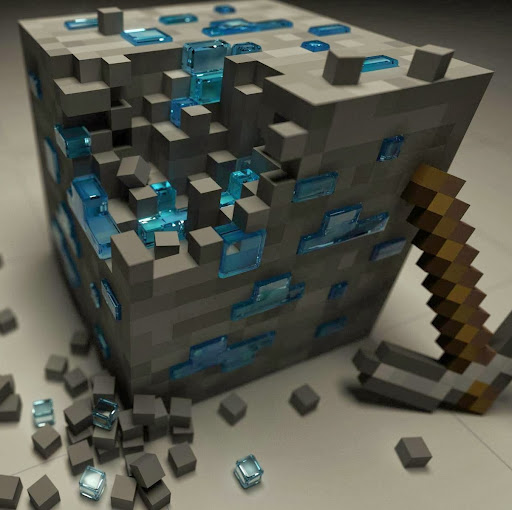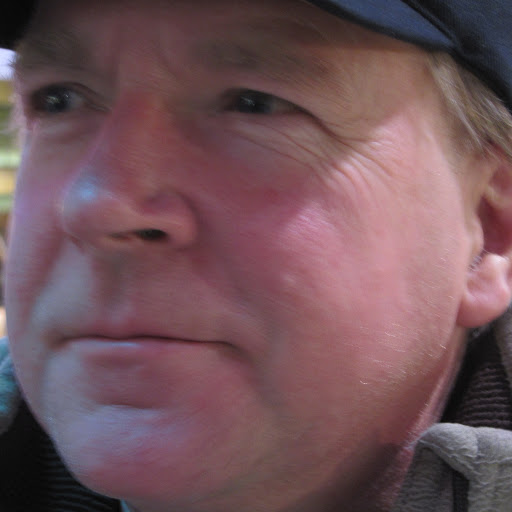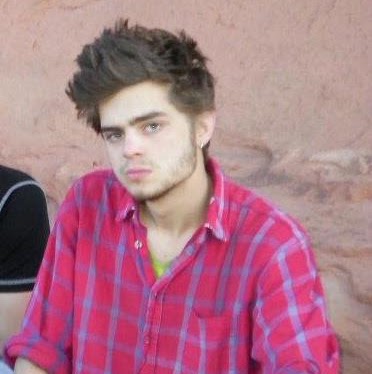Bjorn R Olsen
age ~84
from Milton, MA
- Also known as:
-
- Bjorn C Olsen
- Ejorn R Olsen
- Buorn R Olsen
- O Olsen
- Phone and address:
-
1053 Brush Hill Rd, Milton, MA 02186
617-333-0561
Bjorn Olsen Phones & Addresses
- 1053 Brush Hill Rd, Milton, MA 02186 • 617-333-0561
- Cambridge, MA
- Bryn Mawr, PA
- 1053 Brush Hill Rd, Milton, MA 02186 • 617-699-5450
Work
-
Position:Production Occupations
Education
-
Degree:Bachelor's degree or higher
Us Patents
-
Methods And Compositions For Culturing A Biological Tooth
view source -
US Patent:6899915, May 31, 2005
-
Filed:Nov 29, 2001
-
Appl. No.:09/997734
-
Inventors:Pamela C. Yelick - Concord MA, US
John D. Bartlett - Acton MA, US
Joseph P. Vacanti - Winchester MA, US
Bjorn R. Olsen - Milton MA, US
Phillip Stashenko - Medfield MA, US -
Assignee:President and Fellows of Harvard College - Cambridge MA
General Hospital Corporation - Boston MA
Forsyth Dental Infirmary for Children, Inc. - Boston MA -
International Classification:A61C013/08
-
US Classification:427 226, 4332021, 433204, 264 19, 523115
-
Abstract:Tooth tissues include the pulp mesenchyme that forms the dentin and an epithelium that is responsible for enamel formation. Cells from these tissues were obtained from porcine third molars and were seeded onto a biodegradable scaffold composed of a polyglycolic acid—polylactic acid copolymer. Cell polymer constructs were then surgically implanted into the omentum of athymic nude rats so that the constructs would have a blood supply and these tissues were allowed to develop inside the rats. Infrequently, columnar epithelial cells were observed as a single layer on the outside of the dentin-like matrix similar to the actual arrangement of ameloblasts over dentin during early tooth development. Developing tooth tissues derived from such cell polymer constructs could eventually be surgically implanted into the gum of an edentulous recipient where the construct would receive a blood supply and develop to maturity, providing the recipient with a biological tooth replacement.
-
Methods For Evaluating Susceptibility To A Bone Homeostasis Disorder
view source -
US Patent:7462447, Dec 9, 2008
-
Filed:Feb 1, 2002
-
Appl. No.:10/467033
-
Inventors:Valdenize Tiziani - Fortaleza CE, BR
Ernst Reichenberger - West Hartford CT, US
Yasuyoshi Ueki - Needham MA, US
Bjorn R. Olsen - Milton MA, US -
Assignee:President and Fellows of Harvard College - Cambridge MA
-
International Classification:C12P 1/68
C12P 19/34
C12N 9/00
C07H 21/04
C07K 1/00 -
US Classification:435 6, 435 912, 435183, 536 231, 536 2431, 536 2433, 530350
-
Abstract:The invention provides mutant SH3-binding protein (SH3BP2) nucleic acids, polypeptides, and agents which selectively bind to the mutant SH3BP2 molecules and which do not bind to the wild type SH3BP2 molecules. Methods for selecting agents which inhibit mutant SH3BP2 expression, as well as diagnostic and therapeutic methods which utilize the mutant SH3BP2 molecules for diagnosing and treating disorders of bone homeostasis, also are provided.
-
Regulator Gene And System Useful For The Diagnosis And Therapy Of Osteoporosis
view source -
US Patent:20030027151, Feb 6, 2003
-
Filed:Aug 17, 2001
-
Appl. No.:09/931375
-
Inventors:Matthew Warman - Shaker Heights OH, US
Yaoqin Gong - Jinan, CN
Bjorn Olsen - Milton MA, US
Georges Rawadi - Paris, FR
Sergio Roman-Roman - Paris, FR -
International Classification:C12Q001/68
C07H021/04 -
US Classification:435/006000, 536/023200
-
Abstract:A bone strength and mineralization regulatory (“BSMR”) protein is provided that can exist in multiple forms and that affects bone density. Polymorphic gene sequences of the protein are provided that are diagnostic of predipostion to osteoporosis. Other detection tools, compositions and methods of their use also are provided for predicting, evaluating and altering bone strength and mineralization status. The invention provides new natural and synthetic pharmaceuticals that effect the BSMR regulatory pathway and improve bone status. Tools also are provided for finding new pharmaceuticals that operate by binding to BSMR and that activate and/or deactivate this protein's biological function related to osteoporosis and blood vessel formation.
-
Methods And Compositions For Culturing A Biological Tooth
view source -
US Patent:20040219489, Nov 4, 2004
-
Filed:Jun 3, 2004
-
Appl. No.:10/859896
-
Inventors:Pamela Yelick - Concord MA, US
John Bartlett - Acton MA, US
Joseph Vacanti - Winchester MA, US
Bjorn Olsen - Milton MA, US
Phillip Stashenko - Medfield MA, US -
International Classification:A61C013/08
-
US Classification:433/202100, 433/204000
-
Abstract:Tooth tissues include the pulp mesenchyme that forms the dentin and an epithelium that is responsible for enamel formation. Cells from these tissues were obtained from porcine third molars and were seeded onto a biodegradable scaffold composed of a polyglycolic acid-polylactic acid copolymer. Cell polymer constructs were then surgically implanted into the omentum of athymic nude rats so that the constructs would have a blood supply and these tissues were allowed to develop inside the rats. Histological analysis of 7.5 week-old implants revealed a dentin-like collagenous matrix containing hydroxyapatite mineral surrounding a core of mesenchymal cells that appeared analogous to pulp tissue. Infrequently, columnar epithelial cells were observed as a single layer on the outside of the dentin-like matrix similar to the actual arrangement of ameloblasts over dentin during early tooth development. Developing tooth tissues derived from such cell polymer constructs could eventually be surgically implanted into the gum of an edentulous recipient where the construct would receive a blood supply and develop to maturity, providing the recipient with a biological tooth replacement.
-
Conversion Of Vascular Endothelial Cells Into Multipotent Stem-Like Cells
view source -
US Patent:20130078718, Mar 28, 2013
-
Filed:Mar 9, 2011
-
Appl. No.:13/583294
-
Inventors:Damian Medici - Boston MA, US
Bjorn Olsen - Milton MA, US -
Assignee:PRESIDENT AND FELLOWS OF HARVARD COLLEGE - Cambridge MA
-
International Classification:C12N 5/071
-
US Classification:435350, 435377, 435363, 435351, 435352, 435366
-
Abstract:Disclosed herein is a method of producing multipotent cells, comprising, activating ALK2 of isolated endothelial cells in a serum starved environment, to thereby produce isolated multipotent cells. Activation can be following a threshold period of serum starvation. Activating ALK2 is by contacting the isolated endothelial cells with TGFβ-2 and/or BMP4. The isolated endothelial cells may be human, such as primary vascular, primary microvascular endothelial cells, primary human umbilical vein endothelial cells (HUVEC) or primary human cutaneous microvascular endothelial cells (HCMEC). The activation of ALK2 significantly decreases expression of VE-cadherein of the cells and/or significantly increases expression of one or more of STRO-1, FSP-1, α-SMA, N-cadherin, fibronectin (FN1), Snail (SNAI1), Slug (SNAI2), ZEB-1, SIP-1, LEF-1, Twist, CD10, CD13, CD44, CD73, CD90, CD120A, and CD124. The multipotent cells may further be used to generate other cell types such as osteoblast-like cells, chondrocyte-like cells, adipocyte-like cells, neural-like cells, and myocyte-like cells, by incubating the isolated multipotent cells in the appropriate culture conditions for a period sufficient to induce differentiation. The induced cells express TIE-2.
-
Collagen And Uses Therefor
view source -
US Patent:56437838, Jul 1, 1997
-
Filed:Dec 1, 1993
-
Appl. No.:8/159784
-
Inventors:Bjorn R. Olsen - Milton MA
Suk P. Oh - Chelsea MA -
Assignee:President and Fellows of Harvard College - Cambridge MA
-
International Classification:C12N 500
C12P 2100
A61K 3817
C07H 1900 -
US Classification:435325
-
Abstract:The invention features a novel collagen, type. alpha. 1 (XVIII) collagen, and uses therefor.
-
In Vitro Cornea Equivalent Model
view source -
US Patent:53745159, Dec 20, 1994
-
Filed:Nov 13, 1992
-
Appl. No.:7/974740
-
Inventors:Nancy L. Parenteau - Brookline MA
Valerie S. Mason - Littleton MA
Bjorn R. Olsen - Milton MA -
Assignee:Organogenesis, Inc. - Canton MA
The President and Fellows of Harvard College - Cambridge MA -
International Classification:A01N 102
C12N 500
A61F 214 -
US Classification:435 1
-
Abstract:This invention is directed to an organ equivalent of the cornea part of the eye made using tissue culturing systems. The method of constructing the cornea equivalent results in a structure analogous to the eye cornea in vivo. The cornea equivalent is an in vitro model of the eye, which can be used for transplantation or implantation in vivo or for screening compounds in vitro.
-
In Vitro Cornea Equivalent Model
view source -
US Patent:58276416, Oct 27, 1998
-
Filed:Nov 8, 1994
-
Appl. No.:8/337830
-
Inventors:Nancy L. Parenteau - Brookline MA
Valerie Susan Mason - Littleton MA
Bjorn Reino Olsen - Milton MA -
International Classification:A01N 102
C12N 500 -
US Classification:435 11
-
Abstract:This invention is directed to an organ equivalent of the cornea part of the eye made using tissue culturing systems. The method of constructing the cornea equivalent results in a structure analogous to the eye cornea in vivo. The cornea equivalent is an in vitro model of the eye, which can be used for transplantation or implantation in vivo or for screening compounds in vitro. This invention is also directed to the use of endothelial cells in other tissue and organ equivalents to promote basement membrane development. The cornea equivalent comprises an inner endothelial cell layer, a middle stromal cell and collagen mixture wherein the stromal cells are derived from fibroblast cells and an external epithelial cell layer, wherein the epithelial cells are derived from corneal epithelial cells.
Name / Title
Company / Classification
Phones & Addresses
M
Cape Fish Sales USA, LLC
Phd
President and Fellows of Harvard College
Dental School · Civic/Social Association · College/University · Medical Laboratory College/University · University · University/Harvard Medical School Department
Dental School · Civic/Social Association · College/University · Medical Laboratory College/University · University · University/Harvard Medical School Department
188 Longwood Ave, Boston, MA 02115
350 Longwood Ave, Boston, MA 02115
240 Longwood Ave, Boston, MA 02115
180 Longwood Ave, Boston, MA 02115
617-432-1443, 617-432-1337, 617-432-1297, 617-432-1596
350 Longwood Ave, Boston, MA 02115
240 Longwood Ave, Boston, MA 02115
180 Longwood Ave, Boston, MA 02115
617-432-1443, 617-432-1337, 617-432-1297, 617-432-1596
Resumes

Bjorn Olsen
view sourceLocation:
United States
News

Swedish antibody study shows little sign of herd immunity
view source- Bjorn Olsen, Professor of Infectious Medicine at Uppsala University, is among dozen academics who have criticized Swedens pandemic response and labeled herd immunity a dangerous and unrealistic approach to dealing with COVID-19.
- Date: May 20, 2020
- Category: Health
- Source: Google

Coronavirus Live Updates: Half of Humanity Under Lockdown Orders
view source- government last week banned public gatherings of more than 50 people, down from the earlier limit of 500. But Dr. Bjorn Olsen, an infectious disease specialist who is critical of Swedens soft approach, said the numbers on what constituted an appropriate sized group had been pulled out of the air.
- Date: Apr 03, 2020
- Category: Headlines
- Source: Google
Googleplus

Bjorn Olsen
Education:
Verdalsøra videregående skole, Årdal videregående skole
About:
Trønder ..rømt til vestlandet

Bjorn Olsen

Bjorn Olsen
Tagline:
RingenesHerre.

Bjorn Olsen

Bjorn Olsen

Bjorn Olsen

Bjorn Olsen
Get Report for Bjorn R Olsen from Milton, MA, age ~84